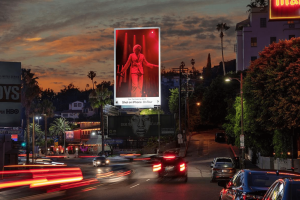For any brand, its customer is the pilot. In a business, nearly 1/4th of sales come from the customers who root for your brand. These cheerleaders have passed the phase of being loyal consumers and now passionately support the brand. Such support and recommendations from customers play a huge role in a buyer’s journey. According to SEMrush, 90% of people get influenced by reviews (even from strangers) and are most likely to purchase. For brands, this selfless act by customers is popularly called advocacy. From this ancient and never-old technique, sales conversion happens automatically and effortlessly.
It’s painful to hear, but a customer may not trust your brand all the time. The chances of them flipping out or moving to the next best substitute always remain high. How would you respond when a consumer no longer trusts your brand? In what way can you tempt them back? To improve the company’s bottom line and gain trust, a wise brand would apply techniques aimed at building trust. Before we dive into the world of these well-known brands, it is important to shed some light on what makes advocacy a hot talk.
Increasing Brand Value
A semi-stable customer’s trust decreases the brand value. If you want the market to consider you as a trustworthy brand, you need unpaid spokespeople. Once customer advocacy is established, the brand gets upliftment on a monetary and goodwill basis. Financially, the product or service receives a long-due appreciation which eventually boosts the purchase. The old customers continue to purchase while the potential will consider making a purchase. Following the monetary benefits, goodwill also lifts it up side-by-side. Improved goodwill here is the result of constant brand positioning which happens through word of mouth.
Brand Engagement
Imagine you went to a movie and later its social media handle asks you to post a pic while you were in the movie. In return, the perks are getting featured on the movie brand’s social media handle. Wouldn’t you be thrilled to do so? Wouldn’t you feel engaged or probably start following that page? We already know the answer. This move facilitates brand engagement which has a direct correlation with emotions. When a brand makes its customer feel valued then the customer develops a sense of empathy and trust towards the brand. This entire act triggers the advocacy factor in the customer.
How did the legends do it?
This theory illustrates the situation of every brand. In these tough-competitive times, there are very few evangelists (advocates) who root for the firm. With no customer advocacy, it’s hard to thrive in the market. Being in these tough situations, some brands have managed to come, shining. They thrived harder by creating some of the naturally produced customers. These customers carry the power to pull a brand out of difficult situations.
See and learn the perfect way of making evangelists for your brand.
Apple
Image Credit : Campaign Live
One campaign that still exists is ‘shot on iPhone.’ Debuted in 2014, it’s still breathing. Apple’s clever marketer noticed the blooming trends on social media. During the period when people were experimenting and getting to know the networking apps, social media was filled with photos and videos. Apple’s always a step ahead in thinking what others can’t. Therefore, the sharp-eyed marketers spotted the trend and released a campaign called #shotoniphone. Moreover, this campaign was a free-will campaign, so there were no payments or rewards for participating. The purpose of the campaign was pure ‘customer advocacy.’ In all cases, brands do this to boost profits, but in this instance, it wasn’t the case. Apple knew its customer base and their obsession with the camera, hence, the brand asked every user to click their best moments with iPhone and use the hashtag #shotoniphone. Unexpectedly, millions of posts and tags came up where users not only mentioned their clicked moments but also started speaking about the features of the iPhone. They mentioned why they are ardent fans of the iPhone and end up becoming advocates.
In this case, Apple’s trigger to advocacy looked more like a campaign but if you look closer, the brand played smart. It became one of the firsts amongst its competitors to bring out the advocates through a trend.
Chubbies
Image Credit : Text request
Above was the story of a highly successful brand where advocacy has already been built. However, speaking of e-commerce start-ups, a brand has to thrive hard to gain advocacy. One such brand which knocked off the myth and established good customer advocacy along with the giants is Chubbies. The brand of radical shorts already gives a summer and weekend vibe to every customer. Its infamous retro striped shorts call for a specific segment of audience taste. Chubbies very well recognized that their product lures only an exclusive group of customers. Thus they took advantage of their close-knit community and planned to inculcate and develop a sense of trust among the customers. They planned to drive revenue through their break-free efforts towards customer advocacy.
Chubbies established customer advocacy through innovative content by including their customers in daily sharings and communication. With the slow pace, the customers formed a community where they were loudly vocal about the product and its features. Customers post and tag the brand on social media without any monetary benefits in return.
Today, Chubbies customer community is counted among the most dedicated ones towards their more favorite brand.
Apple and Chubbies very softly established a sense of advocacy among the customer through mere marketing techniques. These non-hefty techniques are the trends in which a customer usually gets caught up.
Hashtags and Tags :
Well, tagging and hashtagging were followed meticulously in both situations. Tags are the quickest way for a customer or prospect to find what a brand is up to or to determine what’s the shout about. These keywords connect people with the words they’re already using. These hashtags not only increase the social reach of a trend, but also display all the stuff a customer has written in one place. When Apple came up with #shotoniphone, millions of iPhone users came together, and Twitter and Instagram became inundated with selfies and pictures. It still is. When a group of people talk about a single thing, they somehow become a part of an unintentionally-created community. In the zest to speak about the brand they love, they unintentionally become the advocates.
Ratings :
Today, a product or a brand is viewed on the reviews of others. Ratings are a critical part of determining the brand value. Here, you can view this situation from two different perspectives. One is where a rating represents “stars” that determines the brand’s value. Another is the vision of a brand. In this, a rating is viewed as the means of the customer’s voice, whether advocacy or criticism. Talking about advocacy, ratings are a sure-shot way for the customer to speak. Many times you might have seen the reviews of products. These reviews aren’t the paid ones, nor do brands require them, but customers still choose to leave them. That is their sentiment towards the brand which they express through different mediums one of which is rating.
Think Different!
Advocacy is a phenomenon. Zoom in, and you will observe that this term is capable of being the most powerful concept in the buyer’s journey. As discussed, every technique performed rightly can result in the right influence followed by wonders. All you need is a guardian who can ace the market. Our journey with numerous brands has made us well-aware of the behavior of brands, their zest to get all, but failing to do so. Our way of customer advocacy marketing is through authentic advertising to which customers respond the most. Now, if you want to cultivate the same loyalty with authenticity, click here to learn how.






